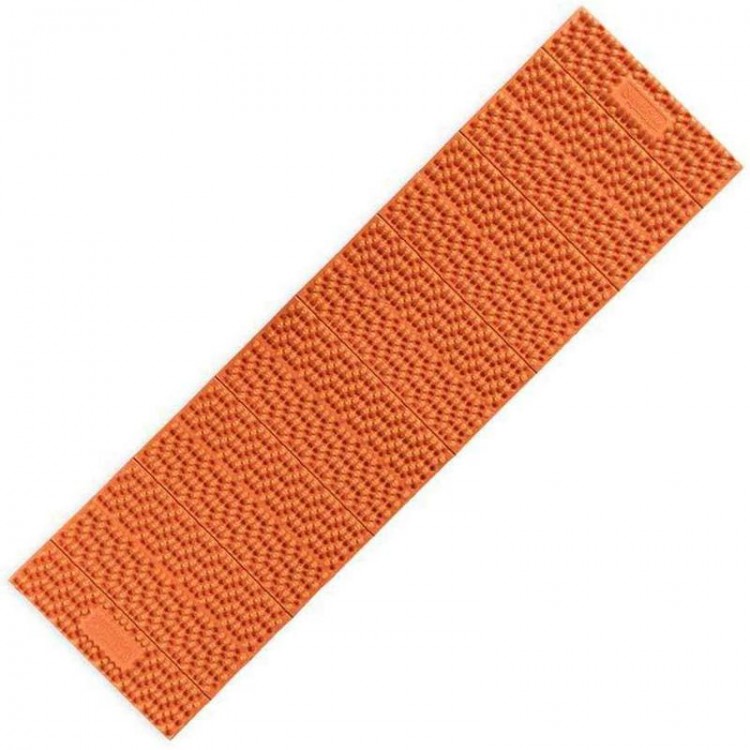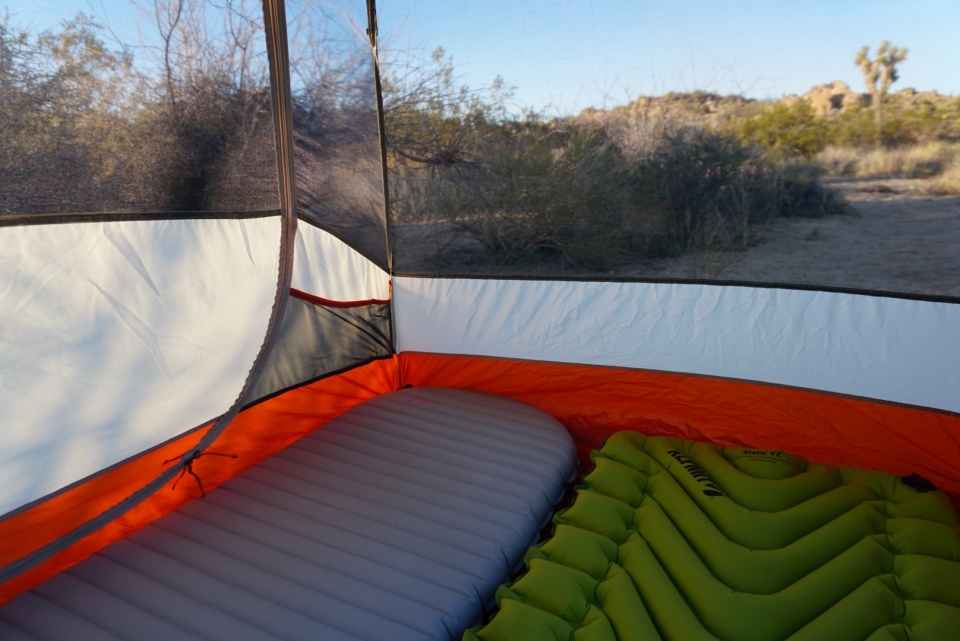WHAT IS R-VALUE? And PICKing THE Perfect SLEEPING MAT
When I first started backpacking and was in the process of acquiring gear, only two things were on my mind: weight and cost. It was my goal then to start working towards some serious thru hikes and I knew that as the miles grew longer, every ounce in my pack would become more precious. I also knew the unfortunate truth that cost often begets quality when it comes to outdoor gear. Still, I was a student and working within a tight budget.
Fast forward one year, and there I was on the Drakensburg Grand Traverse in full fetal position, trying to get through a brutally cold night, wondering what it was that had gone wrong. I had been warned that temperatures may drop on the South African plateau, but I also believed I had come prepared. My sleeping bag was rated for cold temperatures and at its worst the cold snap never pushed temperatures below the low teens (about -12C).
For a few years I blamed my bag. It was real down and occasionally leaked feathers, so naturally I assumed it was partially defective. It wasn’t until my trusty sleeping mat sprung a leak and I was in the market for a new one that I realized I had the identified wrong culprit. In optimizing for lightweight and cheap I had selected a mat that provided almost no insulation and thus was causing me to lose valuable heat via contact with the cold ground.
All this goes to say, not all sleeping mats are the same, and picking the right one for your trip can mean the difference between a peaceful night outdoors and ascetic suffering. Below, I have done my best to share some valuable tips and tricks that may help you sort through the noise.
What is R-value?
One number that you are likely to see featured prominently on packaging or review sites for camping mats is ‘r-value‘. In short, r-value is a measure of “insulating power” that reflects an object’s ability to resist heat flow. This means that the higher an r-value is, the better a mat will be at keeping you warm.
How important is this you might ask? Well that depends on the conditions where you are camping, but if its chilly out, the answer is incredibly important. No matter how warm it is during the day, ground temperatures will always be lower than your body’s equilibrium temperature and thus draw heat from you. Also, since you are in direct contact with the ground, warmth will be lost much faster through conduction. Prolonged exposure to cold ground is actually much more dangerous than exposure to cold air.
Now as you may have surmised, your camping mat is not the only thing in your pack that provides critical insulation at night. Your sleeping bag, clothing, tarp and even tent can play a role. However, the following diagram can serve as a general guide to help you decide what type of sleeping mat will best suit your needs temperature-wise:

Note: The amount of insulation that one needs for comfort or survival will vary person to person, depending on a variety of factors such as age, sex, weight, metabolic rate, etc. If you “sleep cold”, you may want to err on the side of comfort and choose a mat with a higher r-value. Generally, men tend to sleep warmer (and thus require a lower r-value), while women usually sleep colder.
Other considerations
| Material / type | This is basically a choice between two styles of mat: foam vs. inflatable. A foam or “egg crate” mat is the original outdoor sleeping mat and many experienced hikers swear by their durability, versatility, and flash setup. Inflatable air mattresses, on the other hand, are a modern solution to reducing pack size and increasing comfort. |
| Size (unpacked) | Some mats will come in different sizes (i.e., S / L / XL) that correspond to the length and width of the mat when unfolded / inflated. Prior to purchasing a mat, ensure that you have selected a size that will fit your own dimensions. If in search of supreme comfort, you may want to ensure you have budgeted a few extra inches to keep you from sliding off in the middle of the night. |
| Size (packed) | Whether you subscribe to the principles of ultralight backpacking or are just looking for something to take on a weekend trip, smaller is always better. I tend to use a Nalgene water bottle as my gauge for a good compact size, while ultralight options may be ~50% smaller and extra-insulated expedition mats could be as much as 200% larger. |
| Weight | As with packed size, less is more when it comes to the weight of your outdoor gear. Mats are one of four large essentials items that most backpackers carry (along with their pack, tent, and bag) so it is great place to look to cut out some extra ounces. Most will be somewhere in the range of 8oz.- 2lbs. |
| Thickness | When it comes to mats, thickness is the closest proxy for comfort. In general, they may run as thin as ~0.5 inches or as thick as ~3 inches. If you are most concerned about a good night’s sleep, opt for more. However, it is worth noting textured mats with different air pockets may have thin spots that can prove uncomfortable if they hit in the wrong spots. Try before you buy. |
Recommendations
Great for low cost: Klymit Static V (~$60)

My go-to option for years, the Klymit Static V is a dependable 3-season mat that, at ~$60, is a bargain in the world of outdoor gear. Packing down to about the size of a small water bottle and weighing in at no more than 1lb. 2oz., you can conveniently take it anywhere that it isn’t freezing (r-value: 1.3). The mat can be difficult to re-pack due to a compressed stuff sack and some newer models have a mouthpiece that is tedious, but as far as shortcomings go, the issues are small potatoes. While technically pricier than most foam mats, the extra padding offered as an inflatable makes the Static V a great entry-level mat for all but the most intrepid backpackers.
Great for ultralight: Therm-A-Rest NeoAir Uberlite (~$250)

As the featured ultralight line from a brand that specializes in sleeping gear, long-distance trekkers cognizant of base weight and pack size cannot go wrong with the Therm-a-Rest NeoAir UberLite. Despite weighing in at just 6 ounces and packing down to 6 x. 3.3in., the NeoAir UberLite has a generous thickness of 2.5in. and a suitable r-value of 2.3. Combine this with the quality of the brand and it’s lifetime warranty, and you have a premium sleeping mat ideal for those in search of a best-in class product for serious exploration.
Great for cold weather: Therm-a-Rest NEOAIR Xtherm (~$250)

The sister product of the UberLite, Therm-a-Rest’s NeoAir Xtherm is a similar camping mat intended for cold winter conditions. The primary difference between the two mats is that for the cost of few extra dollars and approximately 14 ounces of additional weight, the Xtherm offers a significantly higher r-value of 6.9. This is provided via a thin insulating layer that, much like a space blanket, blocks the transfer of body heat into the cold ground. For those who envision taking trips that involve camping in sub-freezing temperatures, the Xtherm is just one way to make your excursion a little more enjoyable.
Great for maximum comfort: Big Agnes Insulated Air Core (~$140)

When maximizing for comfort one should really be maximizing for thickness and there are few products on the market of reasonable weight, size, and cost that offer more thickness than the Big Agnes Insulated Air Core. The vertical “I-beam” design keeps one centered on the mat and helps ensure a good night’s sleep. Additionally, it comes with a handy inflation sack that makes the Big Agnes much easier to set up at night (especially given the extra air that is required). My only complaint is that it can be a little noisy as one shifts around on the mat. Though its size may not make the Air Core the best option for thru-hikes, it should be within the consideration set for light sleepers, short trips, and car camping.
Great for durability: Nemo Switchback (~$50)

As a leader in the foam mat space, Nemo’s Switchback is a reliable option for those seeking to optimize for durability and versatility in their mat. Though bulkier than inflatable options, foam pads can be strapped to the outside of backpacks without fear of damage, and thus may take up less valuable pack space than alternatives. The ability to fold the Switchback into an elevated seat, as well as its utility on rough, uneven surfaces make it a favorite of long-distance hikers and rugged expeditionists. Fair warning however, not all backpackers enjoy using foam and side-sleepers especially may prefer the extra thickness / clearance offered by inflatables. Generally all foam mats are can be considered similar, but as a reputable brand with slightly thicker foam than some leading competitors, I would recommend the Switchback.
Disclaimer: I do not receive any compensation for recommending these products and all opinions / recommendations are solely based on my own experiences

